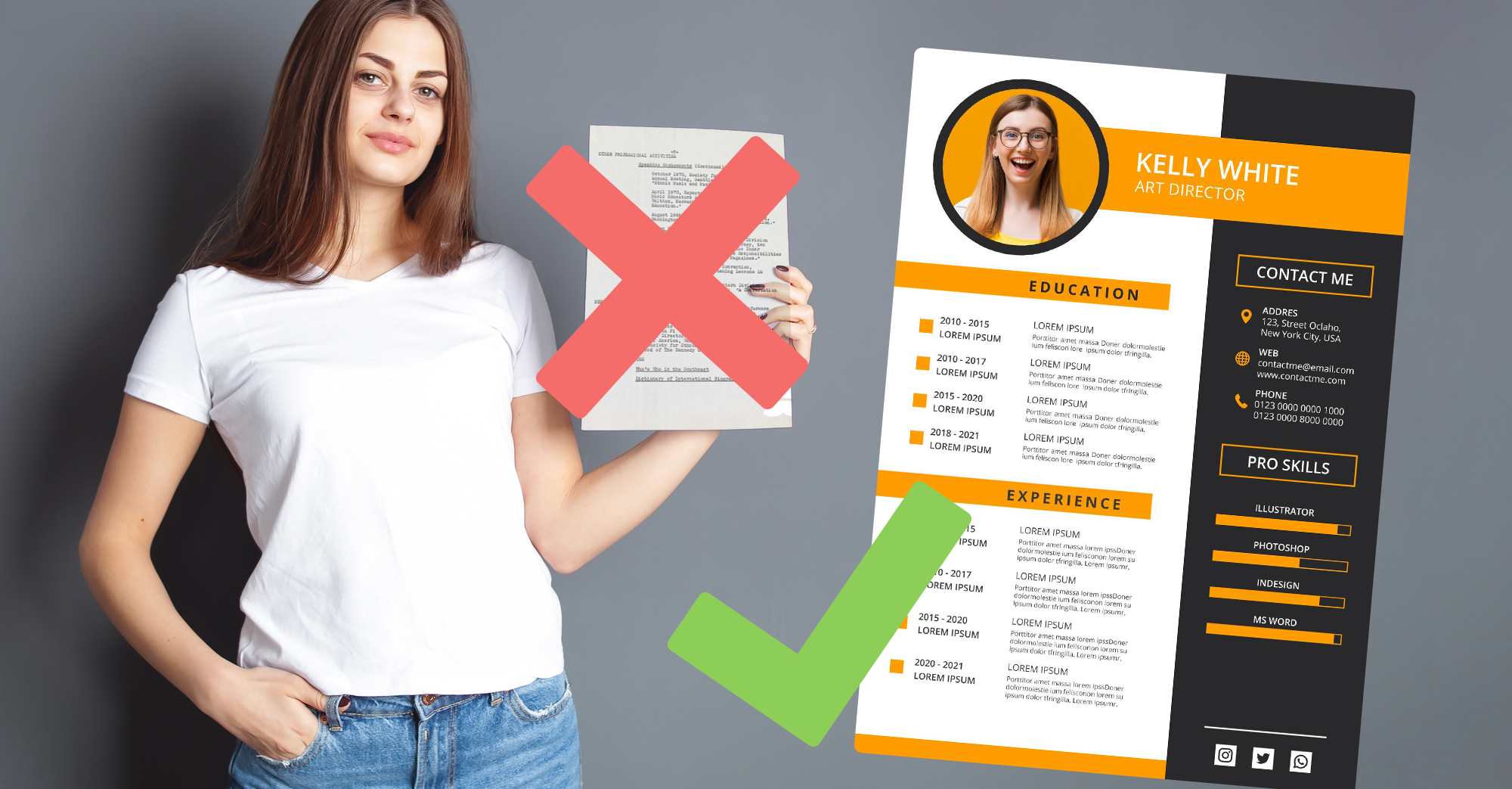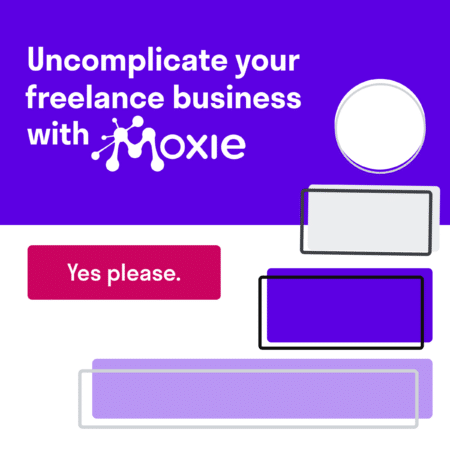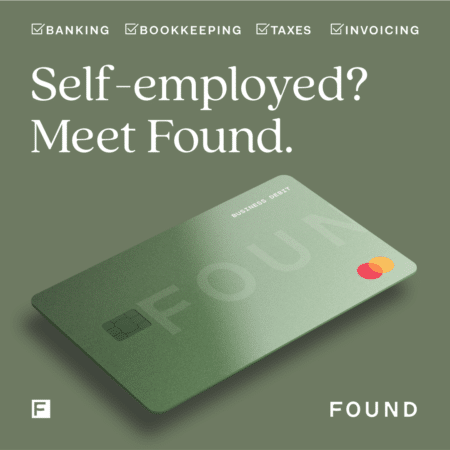- Should You Use a Freelancing Resume or Portfolio?
- Choosing the Right Format
- Describing Your Freelance Work Experience
- Adding a Special Projects Section
- Crafting a Strong Summary or Objective
- Spotlighting Your Skills
- Additional Winning Touches
- Checklist Before Submitting Your Freelancing Resume
- Go Forth and Get that Client!
An effective freelancer resume can be the difference between getting ignored by clients and filling your client pipeline.
If you’ve done any amount of freelancing, you know landing the best freelance gigs or full-time jobs requires a phenomenal resume. But converting complex freelance experiences into simple, skimmable resume form is no cakewalk.
Most of us juggle endless projects with fragmented timelines, zigzagging between independent work and traditional jobs. So how do you package that haphazard history into a coherent story to put on your freelancer resume?
Today’ I’ll explore all aspects of constructing an eye-catching freelancing resume to beat the odds and win new clients.

Should You Use a Freelancing Resume or Portfolio?
Before constructing your resume, consider your goals.
Are you seeking established full-time positions alongside traditional job applicants? Or pitching clients for project-based freelance work?
If applying for regular jobs, a polished chronological resume is best. However, when marketing services directly to potential new clients, lead instead with a portfolio website showcasing your freelancing achievements.
Include tailored sections that speak to specific client needs and preferred delivery methods. For example, a freelance designer would showcase past visual designs and branding work through an online portfolio. A freelance consultant may describe methodologies, frameworks, and case studies in a printed portfolio.
This guide focuses on building an optimal resume, whether as your sole collateral or supplementing a portfolio when job hunting.
Let’s explore how to emphasize the right details regarding your freelance experience to emerge as a top applicant.
Choosing the Right Format
Formatting significantly impacts how your freelancer resume is received and reviewed. For freelancers, debating between the traditional reverse-chronological or a skills-focused functional resume is critical.
Reverse-Chronological Format
The reverse-chronological approach lists your work history starting with the most recent position, then flows backwards through past jobs and freelance roles. This offers a clear view of your career journey over time.

Pros:
- Preferred by the vast majority of hiring managers
- Easy to quickly scan key details like employers, titles, dates
- Demonstrates career advancement and developer
Cons:
- Perpetuates perception of employment gaps
- Fails to adequately emphasize transferable skills gained from freelancing
- Weight towards promotions over abilities
Use This Format If:
You held staff jobs later in your career or want your trajectory to appear stable. Hiring managers gravitate towards the comfortable reverse-chronological approach.
It also complements applicants from traditional corporate backgrounds.
Web Designer, CreativeDrive (Jan 2022 – Present)
Senior Graphic Designer, Imagine Media (March 2017 – Dec 2021)
Freelance Web and Graphic Designer (Dec 2015 – March 2017)
SOURCE: TheFreelanceFiles.com
Functional Resume Format
Alternatively, the functional format spotlights your most relevant and impressive skills and achievements up front rather than career progression. Ideal for freelancers, its emphasis on showcaseing top talents reverses the focus of reverse-chronological resumes.
Pros:

- Immediately promotes specialized skills gained from freelancing
- Downplays disjointed career trajectories or gaps
- Draws attention to your value and talent offerings
Cons:
- Unconventional style that some hiring managers frown upon
- Work histories placed lower receive less visibility
- Dates and job durations are not obvious
Use This Format If:
You want your top talents tied to freelancing front and center. Also consider if your work history is fragmented or contains unavoidable large gaps.
Customer Research Expert
– Conducted 50+ customer discovery interviews identifying high-value features
– Transformed qualitative insights into validated user personas and actionable opportunity areas
Product Manager
– Led agile development of cloud-based consumer mobile app achieving #1 lifestyle app download ranking
– Managed product roadmaps and feature prioritization for cross-functional team of 18
Web Designer
Imaginative Labs (Jan 2021 – Present)
SOURCE: TheFreelanceFiles.com
Hybrid Format
A hybrid resume blends aspects of reverse-chronological and functional formats, seeking to capitalize on the strengths of both approaches.
For example, you may open your resume by listing key skills and talents gained from your freelance work. This skills/achievements section allows you to spotlight abilities that may not be adequately captured by your standard work experience entries.

Website Development
– 5 years experience building custom WordPress sites
– Expert in HTML, CSS, JavaScript, PHP
– 120+ websites launched leveraging optimized SEO practices
Graphic Design
– 7 years experience with Adobe Creative Suite
– Branding kits for 30+ startup companies
– Won “Most Innovative Logo” design award at 2021 National Conference
Project Management
– Certified Associate Project Manager (CAPM)
– Led website development projects end-to-end for 45+ clients
– 97% on-time delivery rate over past 2 years
This skills-focused section provides ample space to showcase your most impressive freelancing accomplishments and specialized abilities right up front.
Next, you would proceed into a reverse-chronologically ordered work experience section outlining your recent freelance jobs/clients:
Example Work Experience Section:
Lead Website Developer
UpTop Design, Remote
Mar 2021 – Present
Freelance Website Developer
DesignWerks Agency, Los Angeles, CA
Jun 2019 – Feb 2021
SOURCE: TheFreelanceFiles.com
By combining an initial skills section with a reverse-chronological work history segment, a hybrid format allows you to highlight achievements, abilities, client names, responsibilities, and work dates in a resume that aims to leverage the best of both worlds.
Visual Presentation
No matter which format you select, ensure your freelancer resume looks clean, organized, professional, and easy to digest.
Consult these visual presentation tips:
Use an evenly spaced standard font like Arial 11 pt
Stick to standard, professional fonts like Arial or Times New Roman at 11 or 12 point size. They provide the easiest readability for resume reviewers. Avoid stylized script or condensed fonts that strain the eyes.
Incorporate ample whitespace between sections
Include ample blank space between resume sections and bullet points rather than cramming content wall-to-wall. This allows key details, achievements and responsibilities room to breathe for better visibility.
Include charts or graphs to visualize proficiencies
Supplement skills and achievement descriptions by incorporating visual graphs, charts or ratings to display competency levels. For example, a 5/5 star rating for Photoshop skills or a horizontal bar chart showing CSS expertise.
Use bolding, italics, underlining to call out notable achievements
Emphasize key quantified achievements, test scores, client names or project metrics by making them bold, italicized or underlined so they jump off the page. But use sparingly for greatest effectiveness.
Align text and dates to the left margin for easy scanning
Align all resume text flushed left rather than centered or justified right. Flushed left allows reviewers to scan vertically easily down each section. Right-justified dates and companies to the same length presents uniformly.
Pepper in relevant icons, dividers, or logos for visual interest
Incorporate occasional icons, horizontal dividers/lines or company logos relevant to entries to add visual intrigue. For example, after listing skills in Javascript or React, insert their official icon images. Or add company or institution logos next to degree names. Use sparingly and ensure adapted to the resume’s overall aesthetic.
With a balanced layout full of white space, clear headings, and identifiable facts, you’ll achieve an inviting aesthetic while emphasizing key details.
Describing Your Freelance Work Experience
It’s time to articulate exactly what you’ve achieved as a freelancer. This section holds the most weight for convincing potential employers to interview you.
Treat freelance clients and projects as traditional job entries, listing start and end dates, role titles, company names, and an overview of responsibilities and achievements. Maintain consistency as if freelance gigs were established company positions.
For each engagement, emphasize which skills you specifically leveraged, metrics positively impacted, and notable outcomes achieved rather than general duties alone. Quantify your contributions with real numbers whenever possible to crystallize previously fuzzy freelancing efforts.
Freelance Web Developer, UpTop Design (Mar 2021 – Present)
– Coded websites for 45 small business clients using HTML, CSS, JavaScript
– Boosted client lead capture form signups 35% on average through UX optimization
– Cut homepage load speeds by 65% via implementing page caching best practices
SOURCE: TheFreelanceFiles.com
Freelance Business Consultant, Venture VPC (Jun 2019 – May 2021)
– Conducted 55 client business requirement gathering and analysis sessions
– Produced 23 end-to-end client roadmaps detailing market conditions, buyer personas, addressable segments, competitive landscapes, strategic partnerships, operational processes, tech capabilities, and 12-18 month objectives
SOURCE: TheFreelanceFiles.com
Don’t forget to spotlight any awards, recognitions or testimonials received for exemplary work:
Freelance Graphic Designer, Kinetix Design (Aug 2017 – Present)
– Produced branding, packaging, and apparel designs for 32 startup clients
– Won “Most Innovative Branding Suite” as judged by 2022 National Design Awards
– “Kinetix developed exactly the style we envisioned for our quirky brand. Our sales jumped 42% the month after launching their branding designs!” – Danny Tanner, CoolBeans CEO
SOURCE: TheFreelanceFiles.com
Additionally, you likely strengthened specialized niche skills in your discipline as well as broadly transferable abilities from freelancing like business operations, customer service, marketing, project & time management, budgeting, communications and problem solving. Call out these supplemental talents gained:
Digital Campaign Strategist, Venturi Consulting (Sept 2016 – Jul 2021)
– Orchestrated 38 integrated digital marketing plans combining conversion rate optimization, funnel optimization, email nurturing, multi-channel ads, and branding kits
– Client annual recurring revenue grew on average 19% year over year
– Developed extensive analytical, project management, client relations, and Agile marketing abilities. Certified in Google Analytics and Pragmatic Institute
SOURCE: TheFreelanceFiles.com
Adding a Special Projects Section
Beyond formal freelancing jobs, most independent contractors amass additional noteworthy accomplishments that strengthen personal brands – volunteering, blogging, open-source contributions, entrepreneurial ventures, etc.
Add a separate “Special Projects” section to feature these talents and supplement your overall experience. For example, an accountant could detail providing pro-bono services for local non-profits during tax seasons. Or a writer might mention a popular blog they organically grew to 50,000 monthly visitors.
Stick to special projects directly related to the posted job’s desired skills and industry. And focus on 1-3 significant endeavors over briefly listing various minor ones for greatest resume impact.
Crafting a Strong Summary or Objective
Because skimming reigns supreme during initial resume screenings, freelancers need to immediately catch reviewer’s attention.
Open with a short professional summary (or objective statement). In just 2-3 concise sentences, spotlight your personal brand and convey top-line achievements to align with the targeted company’s needs.
Decorated freelance iOS developer able to quickly build best-in-class mobile apps that delight users and dominate app store rankings. Developed lifestyle app The Daily Jungle achieving #1 Health & Fitness download honors for 32 straight weeks.
SOURCE: TheFreelanceFiles.com
Or clearly convey through an objective how you’ll apply learnings from past freelancing directly to benefit the new employer.
Seasoned freelance business intelligence consultant seeking to optimize data analytics and quantitative decision making for Fortuna500’s strategy group. Helped previous financial services clients double yearly ROI utilizing predictive models and data visualization.
SOURCE: TheFreelanceFiles.com
Powerful summaries or objectives entice further reading rather than instant rejection piles.
Spotlighting Your Skills
Beyond listing abilities tied to work experiences, some freelancing resumes warrant a separate comprehensive skills section. This directly connects your capabilities to requirements sought – especially beneficial for IT, technical, financial, or healthcare roles.
Pull 5-10 salient skills from the job description, then prove aptitude detailing relevant freelance projects or metrics achieved. List both niche technical abilities like programming languages and general proficiencies like communication or time management.
Web Development – Construct full-stack, mobile-responsive websites; 120+ successfully delivered. Proficient across JavaScript, Node.js, React, MySQL.
Project Management – Led 12 multi-phase business intelligence projects on-time and under-budget. Certified Associate Project Manager (CAPM).
Graphic Design – Create custom digital designs, branding assets, packaging, and data visualizations using Adobe Creative Cloud applications.
SOURCE: TheFreelanceFiles.com
Additional Winning Touches
We’ve covered core components, but finishing touches further boost credibility:
Cover Letters
Include a tailored cover letter (or letter of introduction) to introduce yourself and tie past freelancing directly to posted requirements. Reference precise skills needed and quantify relevant achievements.
LinkedIn Profile
Link your resume to a polished LinkedIn presence featuring great freelancing recommendations.
Online Portfolios
Link to visual examples of work product including websites, designs, photos, videos, writing samples, etc.
Testimonials
Add excerpted client praise under each freelance job or in an endorsements section. Verbatim compliments build credibility.
Checklist Before Submitting Your Freelancing Resume
Before applying for your next exciting gig, verify your freelancing resume checks the following boxes:
- Selected either reverse-chronological, functional/skills-based, or hybrid format
- Included metrics and specific skills demonstrated during freelance projects
- Emphasized achievements over generic duties
- Mentioned supplemental transferable abilities gained from freelancing beyond niche discipline talents
- Used standard date, company, job title structure to detail freelance work
- Added any awards, testimonials or special projects where relevant
- Led strategically with a resume summary or objective statement
- Added visual appeal through readable fonts, ample white space, dividers, and consistent structure
- Inserted any links to online portfolios, LinkedIn, relatable profiles containing work samples or recommendations
- Attached a personalized cover letter aligning background to role requirements
Go Forth and Get that Client!
In competitive job environments, merely tossing unpolished freelancing resumes over the fence won’t cut it. You must compellingly translate sought after skills and achievements into succinct yet demonstrative content.
By taking the time to carefully tailor messaging to respective opportunities using the tips above, independents can confidently compete against candidates boasting traditional work histories. Leading strategically with niche talents supplemented by transferable competencies tells a coherent story showcasing your value.
So go unleash that exceptional freelancing resume that finally does your work history justice!
Some Images provided by Freepik.
Keep the conversation going...
Over 10,000 of us are having daily conversations over in our free Facebook group and we'd love to see you there. Join us!

